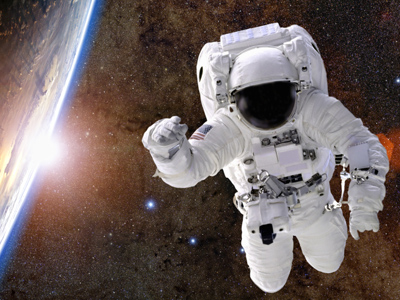This GCSE Physics quiz challenges you on forces and terminal velocity. When you run as hard as you can, you soon reach a point where you can run no faster. This is your terminal velocity (or terminal speed if you are changing direction). Terminal velocity is the maximum velocity an object can reach and it depends on the magnitude of the resultant force - when it becomes zero, terminal velocity is reached. But what is it that reduces a resultant force to zero? When you are running, it is air resistance.
For the GCSE, you are expected to know that the faster an object moves through a fluid, the greater the frictional force that acts on it, as well as the speed changes of an object falling through a fluid due to the force of gravity.
The latter could cover all sorts of things like dropping a marble into a tube filled with golden syrup, how birds of prey increase or decrease their terminal velocity or free-fall skydiving! One of the general skills you need for GCSE physics is the ability to interpret graphs, including velocity-time graphs for objects that reach terminal velocity. On such a graph, a gradient of zero following a period of acceleration indicates that terminal velocity has been reached.
In everyday language, people usually use the word fluid to mean something that is a liquid. In science, it just means a substance capable of flowing, therefore gases (including the air) are fluids too. So, back to running. The faster that you run, the greater the friction of your body with the air (we call this friction air resistance). When the force of air resistance matches the force that your legs can create, the resultant force is zero, so you don't accelerate any more.
Similar thinking can be applied to vehicles. One of the facts about a car that interests some people is the top speed. This is limited by the driving force that the motor can create. When the speed of the car reaches the point where air resistance is equal to the driving force, the car will go no faster. Manufacturers of fast cars keep the mass as low as possible and make the engine generate as much power as it can.
When falling towards earth, parachutists reduce terminal velocity by greatly increasing their surface area. When they jump out of a plane or helicopter, they experience a period of free-fall. During this time, their parachute is not deployed and they simply fall through the air, pulled towards the surface of the Earth by gravity. At the start of the jump, the force of gravity is much larger than the air resistance, so the parachutist accelerates rapidly. As air resistance increases with the increase in speed, the acceleration gradually slows to zero as air resistance and gravitational forces become equal. The parachutist has reached terminal velocity at that point. When the parachute is opened, this presents a greater surface area to the air and therefore the air resistance suddenly increases. This causes a rapid deceleration and so the air resistance force falls again (remember slower speeds mean less air resistance). When it has dropped to the point where it equals the pull of gravity on the parachutist, deceleration stops and the parachutist descends with a much reduced terminal velocity.
For a free-falling human being approaching the Earth's surface, terminal velocity is about 120 miles per hour. In 2012, the first human to free-fall faster than the speed of sound was Felix Baumgartner. He jumped from a balloon at a height of 39,000 metres and his highest free-fall speed was about 880 miles per hour. The air is much thinner at such heights so air resistance is much lower.








